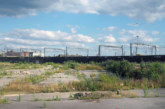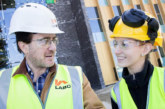In the face of enhanced risk, local authorities are increasingly required to consider Hostile Vehicle Mitigation (HVM) solutions when regenerating public spaces. In this article, Head of Engineering and NPD Roger Knight from Marshalls Landscape Protection explains the benefits of implementing these important safety measures, which can help to protect against possible attacks.
There is a complex hierarchy of requirements when planning the safety of public spaces. For one, urban planners have a duty of care to protect citizens from potential attacks. The global community has witnessed a number of tragic vehicular attacks in the last decade and now better understands the risk posed by such threats. At the same time, local authorities should also consider the implications of overly fortifying public spaces to the point where they become intimidating. By making spaces feel welcoming, citizens are likely to feel more at ease and urban centres can attract higher levels of footfall.
These considerations may soon become even more pressing, following a government consultation on a proposed new Protect Duty Law, which would require local authorities and venue operators to heighten their planning for the risk of attacks. In practice, the bill would require organisations to provide proportionate and reasonable measures to protect citizens in all publicly accessible places. If passed, many local authorities will be required to enhance existing security measures.
However, it’s important to strike the right balance between protecting spaces, while also preserving environmental aesthetics and creating a welcoming feel. Installing lots of heavy-duty bollards or concrete barriers might do the trick in terms of physical protection but from a psychological perspective it can actually have the opposite effect, increasing citizens’ sense of unease by making the space feel oppressively fortified.
Hostile Vehicle Mitigation
Well-designed HVM solutions are an attractive alternative and developments within the market mean this type of protection is no longer limited to simply bollards and barriers. Increasingly, there is a wide range of aesthetic HVM solutions to complement any urban design — including fully crash tested street furniture, such as seating, litter bins and cycle rails. Allowing security measures to be hidden in plain sight, these products can help to make spaces safe without having a negative effect on the aesthetic qualities of the existing landscape.
When specifying HVM solutions, there are a number of factors that should be taken into consideration to ensure that the most appropriate product selections are made — both in terms of achieving the necessary levels of protection and delivering best value for budgets. We always recommend that local authorities consider HVM within the earliest stages of a development, as partnering with a protection specialist right from the start can deliver both cost and time savings when it comes to creating an effective and proportionate design.

Vehicle Dynamics Assessment
Establishing the protection requirements at the beginning is absolutely essential and we recommend undertaking a Vehicle Dynamics Assessment (VDA) as the most important first step. By profiling all possible access routes, the VDA will determine maximum speeds and angles of attack achievable by a hostile vehicle. The assessment also takes into account any existing traffic management measures, such as chicanes or speed bumps, as this will affect the maximum speed potential.
Using this information, we can then calculate the worst-case scenario — i.e. the largest vehicle in terms of both size and weight that can gain access and the maximum speed it could achieve at impact. This then enables us to determine the required levels of protection for each location and select products that have been crash-tested to achieve this. Solutions are available at all levels, including some that can protect against a 7.5 tonne vehicle travelling at 50 miles per hour.
Equally important, is conducting a thorough utilities survey, as this will tell you what depth is available to root the HVM solutions underground. Relying on drawings is risky as these can be out of date, so we recommend an exploration with test holes to ensure the chosen products will fit. Available solutions vary in depth of installation, protective performance and aesthetics. Only when you know the required performance and the available depth for installation, is it possible to shortlist products according to the desired aesthetic.
What’s more, by working with a supplier that can provide a wide range of both HVM and non-protective street furniture solutions, local authorities are able to make cost savings by avoiding over specification in areas where the risk assessment has determined there is a lower protection requirement. For example, the wide number of solutions available in our protective RhinoGuard range can help local authorities to create multi-layered perimeter protection schemes — while our in-house design and engineering teams are able to support in all aspects of the process, from topographical assessment, to scheme design and installation.
When designing HVM schemes to protect public spaces, local authorities must make an effort to combine functionality and style. Fortunately, by partnering with an expert like Marshalls Landscape Protection, local authorities can easily meet all of those needs. Our team is always on hand to help local authorities work through requirements and to suggest suitable solutions from our comprehensive range of protective products.









